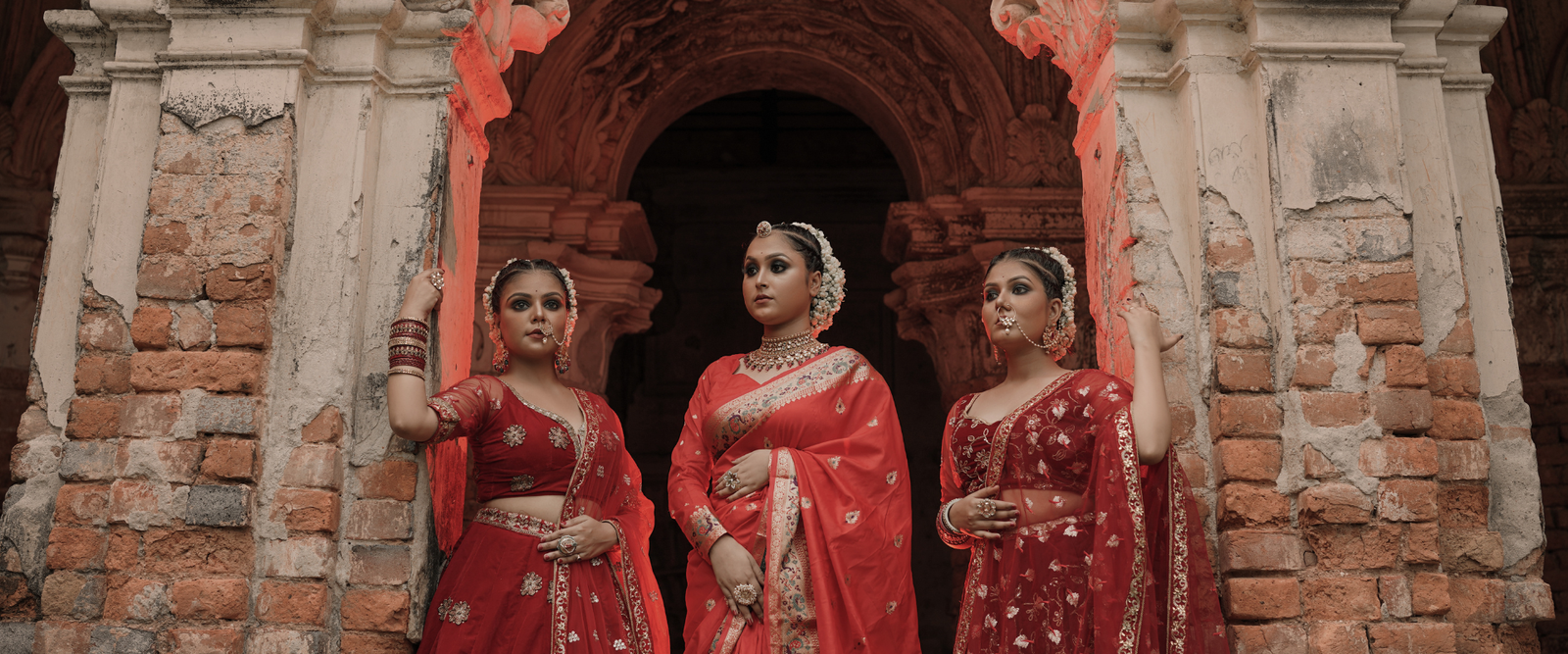The saree is more than just a piece of clothing; it is a reflection of India’s rich culture, heritage, and timeless elegance. For centuries, sarees have evolved in terms of fabric, design, and draping styles, adapting to the changing fashion trends while preserving their essence. From handwoven traditional weaves to contemporary designer sarees, let’s take a journey through the evolution of this iconic attire.
1. Ancient Origins: The Birth of the Saree
Sarees date back to the Indus Valley Civilization (around 2800–1800 BCE). Early Indian women wore unstitched drapes made from cotton and silk, often dyed with natural colors and adorned with simple embroidery. These garments symbolized grace, comfort, and cultural identity.
🌿 Traditional Fabrics Used in Ancient Times:
- Cotton: Worn by commoners for its comfort and breathability.
- Silk: Reserved for royalty and aristocrats, often adorned with gold threads.
2. The Golden Age of Handwoven Sarees
As India’s textile industry flourished, different regions developed their unique weaving techniques. Some of the most popular traditional sarees originated during this time, each known for its craftsmanship and intricate designs.
✨ Famous Handwoven Sarees from Different Regions:
- Banarasi Silk (Uttar Pradesh): Luxurious silk sarees with intricate zari work.
- Kanjivaram Silk (Tamil Nadu): Bold colors with rich gold borders, perfect for weddings.
- Chanderi (Madhya Pradesh): Lightweight and sheer fabric, ideal for summer wear.
- Bandhani (Rajasthan & Gujarat): Tie-dye patterns in vibrant colors.
- Jamdani (West Bengal): Delicate handloom sarees with floral motifs.
The Mughal era further influenced saree designs, introducing Persian-inspired motifs, zari work, and intricate embroidery, making sarees more opulent and royal.
3. Colonial Influence & Modernization of Sarees
During British rule, Western fashion started influencing Indian clothing. While traditional sarees remained popular, new materials like chiffons and georgettes were introduced, making sarees lighter and easier to drape.
🔹 Key Changes in Saree Fashion During the Colonial Era:
- Use of pastel shades and lace borders.
- Introduction of machine-made fabrics like georgette and crepe.
- Evolution of the blouse and petticoat, influenced by Victorian fashion.
This period saw women like Mahatma Gandhi’s wife Kasturba Gandhi and freedom fighter Sarojini Naidu wearing handspun khadi sarees to promote the Swadeshi movement.
4. Post-Independence Era: Bollywood & Saree Fashion
After India’s independence, Bollywood played a huge role in shaping saree trends. Actresses like Madhubala, Rekha, and Sridevi made sarees a fashion statement, showcasing unique drapes and experimental designs.
🎬 Popular Saree Trends Inspired by Bollywood:
- The Retro Look: Polka-dotted chiffon sarees, inspired by the ’60s and ’70s actresses.
- The Royal Silk: Heavy Kanjivaram and Banarasi sarees, popularized by Rekha.
- The Sizzling Chiffon: Sridevi’s sheer chiffon sarees in “Chandni” made them a trend.
5. Contemporary Sarees: Fusion of Tradition & Modernity
Today, sarees are no longer just traditional attire. With evolving fashion trends, designers have reimagined sarees in unique ways, blending Western influences with Indian craftsmanship.
🔥 Modern Saree Trends:
- Pre-Stitched & Pre-Draped Sarees: Perfect for women who want the elegance of a saree without the hassle of draping.
- Ruffle & Layered Sarees: Adding a dramatic effect with flared ruffles.
- Pant-Style & Gown Sarees: A mix of saree and Western silhouettes, giving a contemporary edge.
- Organza & Metallic Sarees: Lightweight and stylish, popular among young women.
Bollywood stars like Deepika Padukone, Sonam Kapoor, and Priyanka Chopra have embraced modern saree designs, making them a global fashion trend.
6. Sustainable & Handloom Revival in Sarees
With the rise of sustainable fashion, handloom sarees are making a comeback. Designers and brands are promoting eco-friendly fabrics, organic dyes, and handmade weaves, encouraging people to invest in ethically sourced sarees.
🌍 Why Choose Handloom & Sustainable Sarees?
✔ Supports traditional artisans and weavers.
✔ Uses natural fabrics and dyes, reducing environmental impact.
✔ Offers unique craftsmanship with rich cultural value.
Final Thoughts: The Saree – A Timeless Icon
From its ancient roots to its modern interpretations, the saree continues to evolve while maintaining its charm and elegance. Whether you love the richness of traditional weaves or the sophistication of contemporary drapes, Aadi Saree Wala brings you the best of both worlds!
🛍 Explore our exclusive saree collection today and embrace the beauty of tradition with a modern touch!


